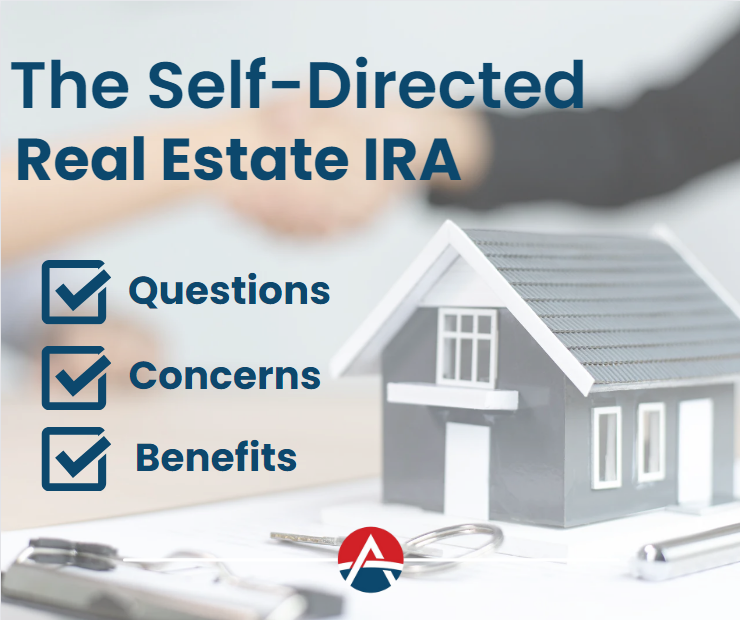Investing in real estate through a Self-Directed IRA (SDIRA) can be a game-changer for your retirement portfolio. This flexible retirement account allows you to diversify beyond traditional assets like stocks and bonds, offering opportunities in real estate that can provide significant returns. At American IRA, we specialize in helping investors navigate the world of self-directed IRAs to achieve their financial goals. This guide will walk you through how to use a self-directed real estate ira investments, highlighting its benefits, the process, and key considerations.
What is a Self-Directed IRA?
A Self-Directed IRA is a type of retirement account that provides investors with the flexibility to choose from a broader range of investments compared to traditional IRAs. Unlike conventional IRAs, which limit investments to stocks, bonds, and mutual funds, a Self-Directed IRA allows for investments in alternative assets such as real estate, precious metals, and private equity.
Key Features:
- Wide Range of Investments: Invest in real estate, private companies, precious metals, and more.
- Tax Advantages: Enjoy tax-deferred or tax-free growth depending on whether you choose a Traditional or Roth SDIRA.
- Control: Directly manage your investment choices and strategies.
Benefits of Investing in Real Estate with a Self-Directed IRA
1. Diversification
Investing in real estate through a Self-Directed IRA helps diversify your retirement portfolio. By adding real estate to your mix of assets, you can reduce risk and enhance potential returns. Real estate often behaves differently from stocks and bonds, providing a buffer against market volatility.
2. Tax Advantages
Self-Directed IRAs offer significant tax benefits:
- Tax-Deferred Growth: With a Traditional SDIRA, your real estate investments grow tax-deferred until you begin withdrawals in retirement.
- Tax-Free Growth: If you choose a Roth SDIRA, your investments can grow tax-free, and qualified withdrawals are also tax-free.
3. Control and Flexibility
A Self-Directed IRA gives you complete control over your real estate investments. You can select the properties you want to invest in and make decisions that align with your retirement goals. This hands-on approach allows for a more personalized investment strategy.
Steps to Invest in Real Estate with a Self-Directed IRA
1. Establish Your Self-Directed IRA
The first step is to set up a Self-Directed IRA with a qualified custodian, such as American IRA. This account will allow you to make investments in real estate and other alternative assets.
- Choose a Custodian: Work with a custodian experienced in managing Self-Directed IRAs and handling real estate transactions.
- Complete Paperwork: Fill out the necessary forms to open and fund your SDIRA.
2. Fund Your SDIRA
Transfer or roll over funds into your Self-Directed IRA to start investing in real estate.
- Direct Transfer: Move funds directly from an existing retirement account to your new SDIRA to avoid taxes and penalties.
- Annual Contributions: Contribute new funds to your SDIRA up to the annual limit set by the IRS.
3. Identify and Evaluate Real Estate Opportunities
Once your SDIRA is funded, begin identifying potential real estate investments.
- Property Types: Decide whether to invest in residential, commercial, or rental properties.
- Due Diligence: Conduct thorough research on the property, including market analysis, property inspections, and financial evaluations.
4. Purchase the Property
After selecting a property, proceed with the purchase through your Self-Directed IRA.
- Transaction Process: Ensure all transactions, including the purchase and any related expenses, are conducted through your SDIRA. The SDIRA will hold the title to the property.
- Compliance: Follow IRS regulations regarding real estate investments to avoid prohibited transactions.
5. Manage the Property
Effective management of the real estate investment is crucial for maximizing returns and maintaining compliance.
- Income and Expenses: All rental income and expenses must be handled through the SDIRA. Proper accounting and record-keeping are essential.
- Avoid Personal Use: Ensure the property is not used for personal purposes, as this could lead to IRS penalties.
6. Monitor and Adjust
Regularly review the performance of your real estate investment and adjust your strategy as needed.
- Performance Review: Assess the property’s financial performance, including rental income and appreciation.
- Reinvestment: Consider reinvesting profits into additional real estate opportunities or other assets within your SDIRA.
Key Considerations
1. Prohibited Transactions
Be aware of IRS rules concerning prohibited transactions. The SDIRA must avoid transactions with disqualified persons and personal use of the property.
2. Tax Implications
Understand the tax implications of your real estate investments. While the SDIRA provides tax advantages, distributions and sales may be subject to standard tax rules.
3. Professional Advice
Consult with financial, legal, and real estate professionals to navigate the complexities of investing in real estate through a Self-Directed IRA. Their expertise will help ensure compliance and optimize your investment strategy.
Conclusion
Investing in real estate with a Self-Directed IRA offers a powerful way to diversify your retirement portfolio and potentially enhance your financial future. By leveraging the tax advantages and control provided by the SDIRA, you can make strategic real estate investments that align with your retirement goals.
At American IRA, we are committed to helping you maximize your retirement investments through Self-Directed IRAs. If you’re ready to explore real estate opportunities with your SDIRA, contact us to learn more about how we can support your investment journey.





Comments